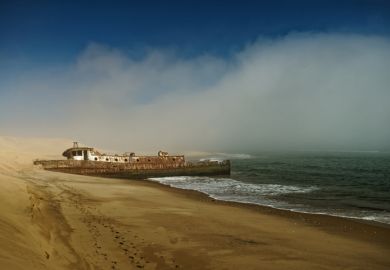This formidable and thought-provoking book is about economy, society, government and war over two millennia, covering the history of most of Europe, with sidelong references to the rest of the world. It has a wide intellectual scope, as it employs a range of models and theories, and is based on data drawn from many sources. Historians of all varieties will benefit from its ideas, but practitioners of economic and military history will find it especially useful. Academics and postgraduate students will be its main users; undergraduates may find it heavy going.
The book's starting point and continuing theme is Tony Wrigley's distinction between the "organic economy", which prevailed from earliest times, and the "mineral economy", which transformed the western world in the 19th century.
In the organic world, the economy depended on agricultural produce, wood fuel, wind and water power, and made much use of the energy of animals for haulage and communications. The mineral economy exploited the energy of fossil fuels, revolutionised agriculture with chemical fertilisers, and developed rapid travel and a global reach. John Landers analyses the organic economy at length, emphasising its limitations in terms of low productivity, widespread poverty, and slow and unreliable transport, and then examines the implications of these characteristics for waging war.
Armies were dependent on human and animal muscle power to move, obtain supplies and fight. The duration of campaigns, the size of armies and their ability to conquer and hold territory were all severely curtailed by limited resources.
Military technology, however, anticipated the advent of the mineral economy, by applying chemistry to warfare in the form of gunpowder.
Consequently, between the 16th and 18th centuries navies and armies with this capability increased their destructive capacity, while still depending for their supplies and transport on the organic economy and inadequate fiscal measures. The British state eventually prevailed over its continental rivals in the 18th and early 19th centuries partly because the embryonic mineral economy was beginning to boost production, and the tax system allowed the government to tap the country's wealth for military spending.
Space is another theme running through the book, as the control of large territories always posed problems for governments constrained by the organic economy. States, given the problems of moving armies and supplies over long distances, found it difficult to rule over remote provinces and to defend frontiers. The solution favoured by the large empires of the 1st millennium AD, which was to delegate power to the outlying territories, caused the ultimate fragmentation of the large political units.
These broad themes are illustrated with insights and small-scale generalisations to support the main arguments. For example, much is made of dependence on the horse, in view of the need to keep the animals fed. The crops of five acres of land were needed to support a horse for a year in 1800, so a high proportion of agricultural produce was used to feed animals rather than people. When horses were used in war, their supplies had to be carried to them, engaging the pulling power of more horses that in turn needed fodder. An army of 10,000 men might be supported by 11,400 horses, Jointly, they consumed a formidable quantity of grain.
Landers has a particular interest in the relationship between population history and military developments. Recruitment into armies had a limited demographic impact on the rest of society, as under the Roman empire they accounted for a mere 1 to 2 per cent of the population, less than 1 per cent in the Middle Ages, and rose above 2 per cent only at the height of the major conflicts in the 18th century. Casualty figures in battle were not sufficiently high, even after the "gunpowder revolution", to have much effect on population levels, though the diseases fostered by large numbers of troops living closely together, spread from armies to civilians with wider demographic consequences. Armies could also inflict suffering on civilians by laying waste the countryside - that is, attacking the enemy's organic economy.
Historians who are not concerned predominantly with the industrial revolution and the rise of the late modern state are bound to feel somewhat depressed by the flattening effect of the "organic economy" concept. Like the dispiriting term "pre-industrial", the phrase condenses thousands of years of human endeavour into a single era. Both phrases emphasise premodern under-achievement, so that, as in this book, the economy can be exposed to withering criticisms for its inefficiencies, poor productivity, low volume of trade, limitations on movement and other fundamental weaknesses.
Having made these rather negative generalisations, Landers then shows that the 2,000 years before 1800 were packed with important developments, among which he highlights the "gunpowder revolution". Economy, government and warfare all experienced dramatic changes through the internal dynamics of societies, economies and cultures. Landers shows us that people in the past, in spite of the constraints of the organic economy, were ingenious and creative enough to find many ways of organising production and the distribution of the resulting surplus. But he is reluctant to celebrate these triumphs over adversity. While it is salutary to be reminded of the fundamental material base on which all other developments depended, we could have been informed a little more about the impact of ideas. The enthusiasms aroused by the Reformation or the French revolution drove some of the armies into battle, with or without adequate supplies of fodder.
This is not a book with a contrived "message". It avoids making glib connections between its two principal areas of interest, such as the idea sometimes floated that military needs drove the transition to the "mineral economy". It explores the important interconnections and parallels between economic and military history in a thoughtful way, and it will stimulate future discussion.
Christopher Dyer is professor of regional and local history, University of Leicester.
The Field and the Forge: Population, Production, and Power in the Pre-Industrial West
Author - John Landers
Publisher - Oxford University Press
Pages - 440
Price - £55.00
ISBN - 0 19 924916 4



